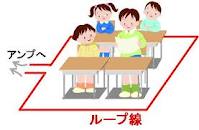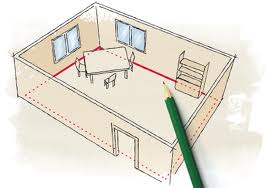 | ||||||
(516) 731-5868 Local
(877) 761- HEAR - Toll Free
Listen HEAR Group
 | ||||||
Hearing Assistive Technology Systems (HATS)
 | ||||
 | ||||
Hearing Assistive Technology Systems (HATS) for Children with Auditory and Language Processing Disorders
Children with auditory and/or language processing disorders require accommodations and modifications in the classroom in order for the child to be able to hear, process and understand the information presented to them.
According to Section 504 of the Rehabilitation Act of 1973 and, the American Disabilities Act (ADA) Obligations of Public Schools, “auxiliary aids and services” must be provided to students with hearing impairment or deafness. In addition, these obligations also apply to parents and others who are entitled to equal access and an equal opportunity to participate in public school services, programs and activities. Section 504, 29 U.S.C./794 requires programs which receive federal financial assistance to provide accommodations such as interpreters, real-time captioning, assistive listening devices or other auxiliary aids to people with disabilities to ensure effective communication.
Title II of the ADA, 42 U.S.C./12101-12213 requires comparable access by all state and local government programs regardless of whether or not the programs get federal financial assistance.
According to the American Speech-Language-Hearing Association (ASHA), Hearing Assistive Technology Systems (HATS) are devices that can help an individual with hearing loss, deafness or auditory processing difficulties communicate more effectively in day-to-day situations. These assistive devices can be used with or without hearing aids or cochlear implants. The purpose of these devices is to reduce stress and fatigue, and to promote improved listening and better communication.
Guidelines pertaining to acceptable classroom acoustics were established by ASHA in 1995. ASHA reported that poor acoustical environments can affect the student’s attention and listening behaviors, speech perception, and ultimately academic performance. Furthermore, ASHA reported that if a student also has a learning disorder, hearing loss, central auditory processing disorder, or developmental delay, then the effects of the acoustical environment are even greater.
The purpose of using HATS is to ultimately reduce the distance between the listener and the sound source, minimize the competing noise in the environment and reduce the effects of poor room acoustics and reverberation.
There are several types of assistive devices that can be used in the classroom environment in order to meet these needs. These include personal FM systems, sound-field systems, infrared systems and audio frequency induction loop systems. The goal of each of these systems is to provide improved signal to noise ratios which ultimately results in hearing the spoken message more clearly.
Personal FM Systems require that each student have their own receiver and the teacher wears a transmitter which delivers the signal to the student either via a headset or desk unit.
Sound Field Systems are similar to the personal FM system, however, the signal is sent out through loud speakers which are placed within the classroom.
Infrared Systems require headsets to be worn by the student in order for the signal to be received. It is also limited to line of sight transmission and is affected by sunlight.
The above three systems are very expensive since they cannot be used universally. These units must be programmed and customized for each student and are programmed using a unique frequency in order to avoid interference of signal within the classroom.
In addition, these systems also require that the speaker be facing the listener or the signal will be compromised and reduced in intensity and clarity.
Audio Frequency Induction Loop Systems are relatively simple and are essentially maintenance free. Electromagnetic waves are produced by a sound source such as a microphone used by the teacher. There is a copper wire which is looped around the perimeter of the classroom. This copper wire transmits the signal (speech) directly to the listener via a hearing aid, cochlear implant or neck loop receiver worn by the student. Hearing aids, cochlear implants or the neck loop receiver must contain a telecoil in order to receive the signal. Then the speech is heard clearly and distinctly.
Speech is delivered directly to the hearing device in an undistorted form which is tailored to the student’s individual hearing needs. The induction loop system works on a universal signal and does not depend on multiple frequencies as with FM hearing enhancement systems. The signal is not affected by the distance the listener is from the sound source or by interfering background noise. As long as the student is within the looped area, the signal will be transmitted clearly and distinctly. The system is cost effective since the only requirement is to have a hearing device equipped with a telecoil. The system can be configured in phased array and low-spillover designs so sound is confined to particular areas and is not shared room to room. Finally, the use of induction loops within the classroom are designed to be inconspicuous, therefore the student does not feel uncomfortable using the loop system since the signal is transmitted directly to their own hearing device or a small neck loop worn around the student’s neck.
Our induction loop systems are designed and installed to meet or exceed the IEC 60118-4 standard. In addition, the use of induction loop systems in the school setting will meet ADA requirements for the student with hearing impairment and/or deafness.
Here is a demonstration of how an audio frequency induction loop system can benefit your students.
Please call us to schedule an appointment to discuss how a custom induction loop system can be designed especially for your school.
Long Island & NYC (516) 731-5868
A Division of iHear-Speech-Swallow-Help, Inc

